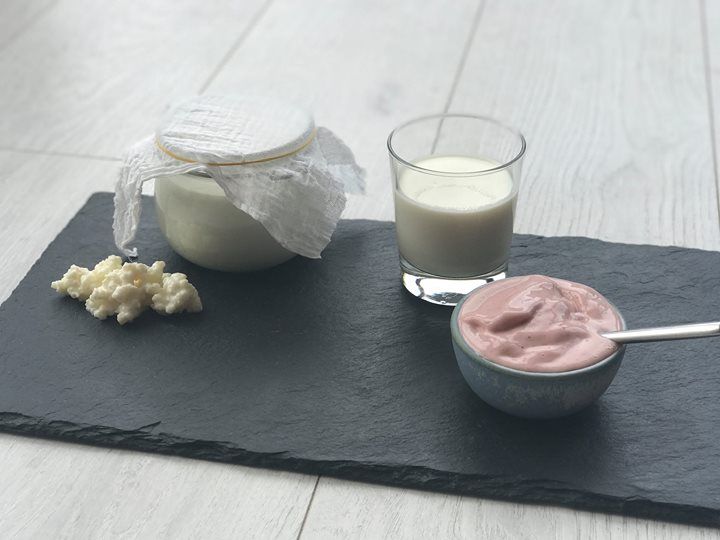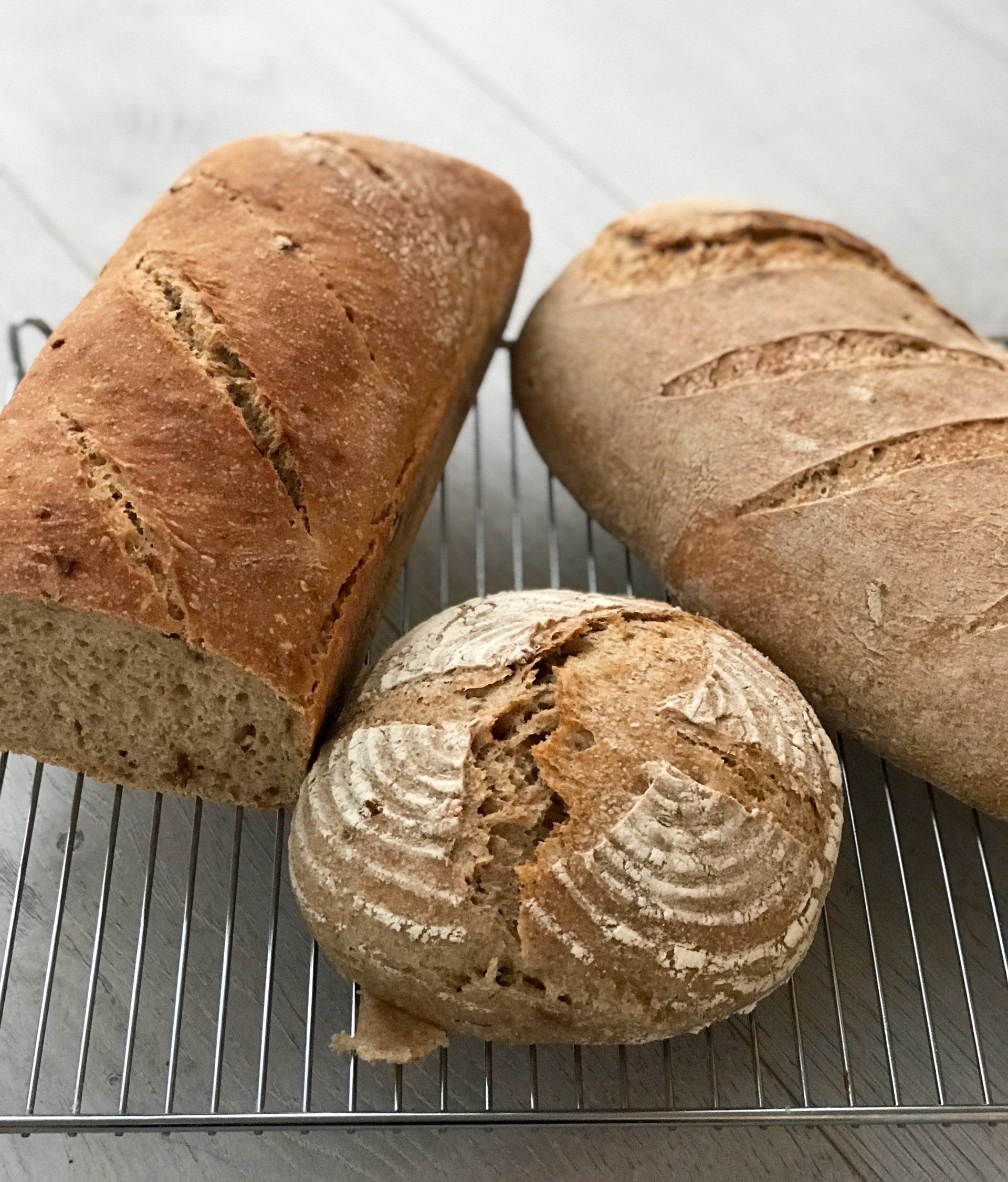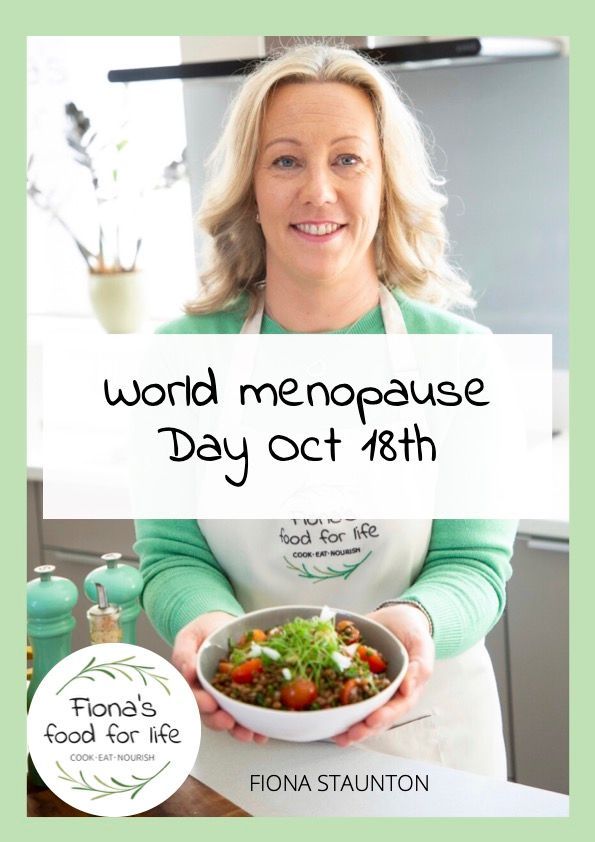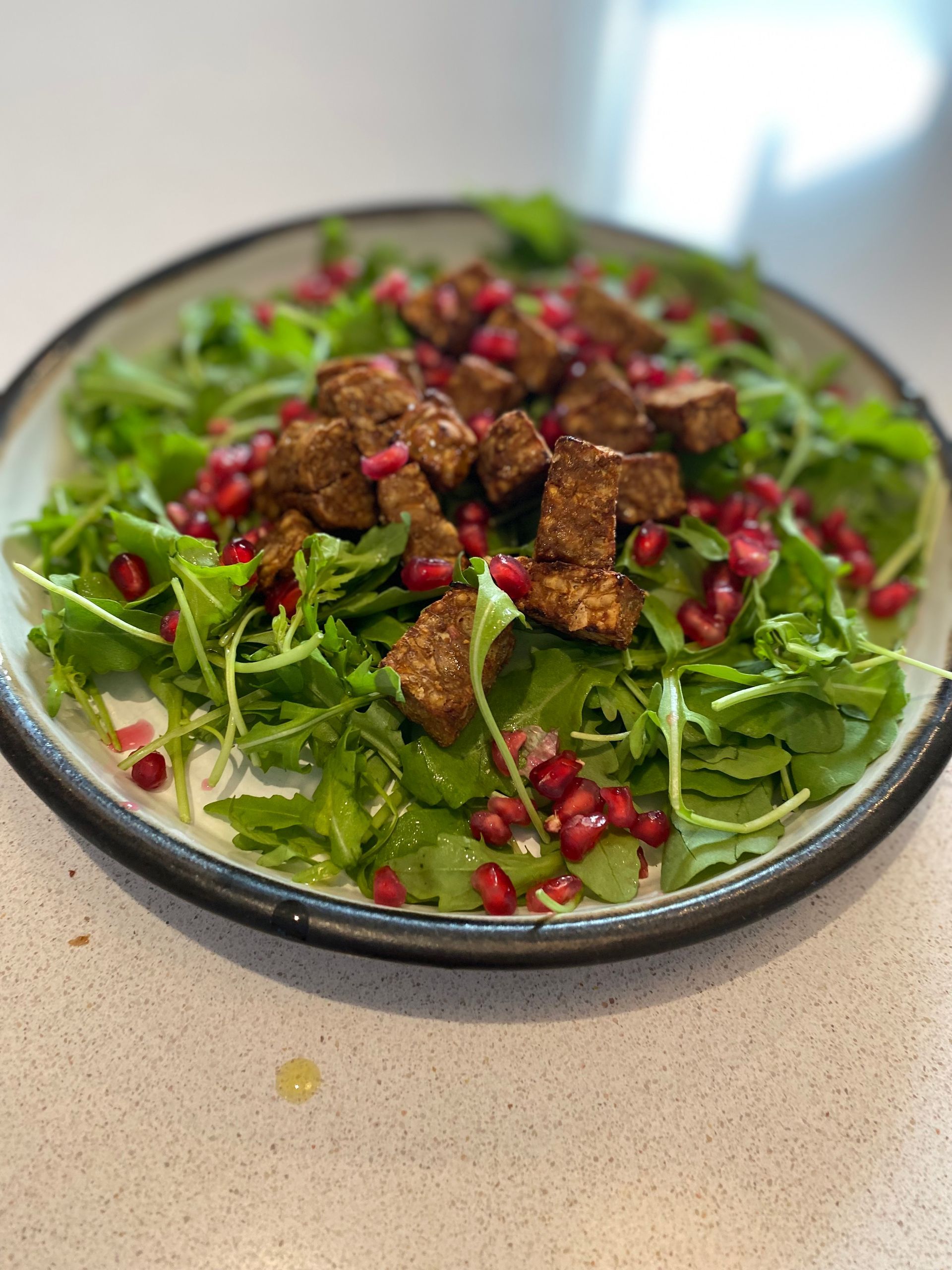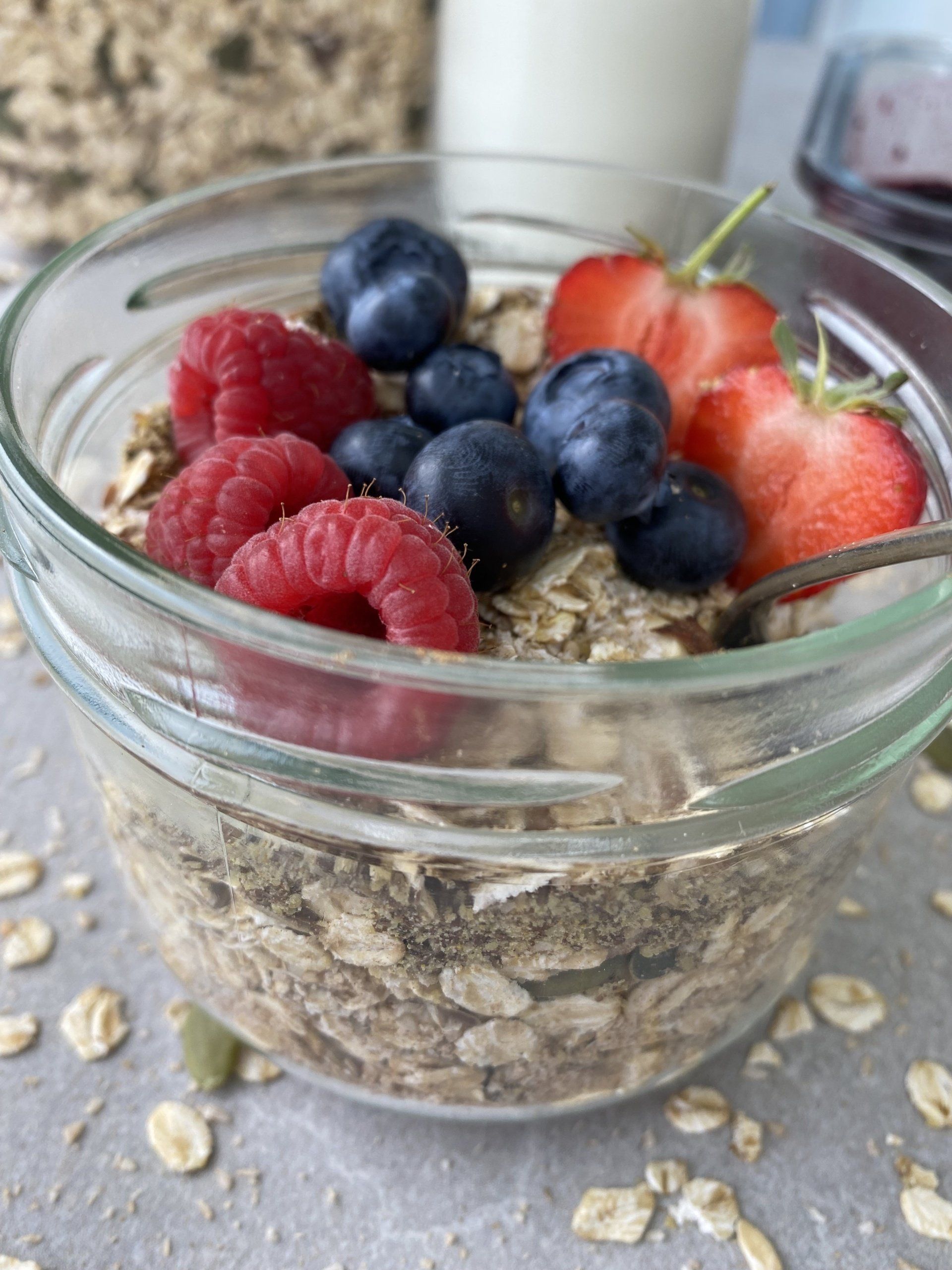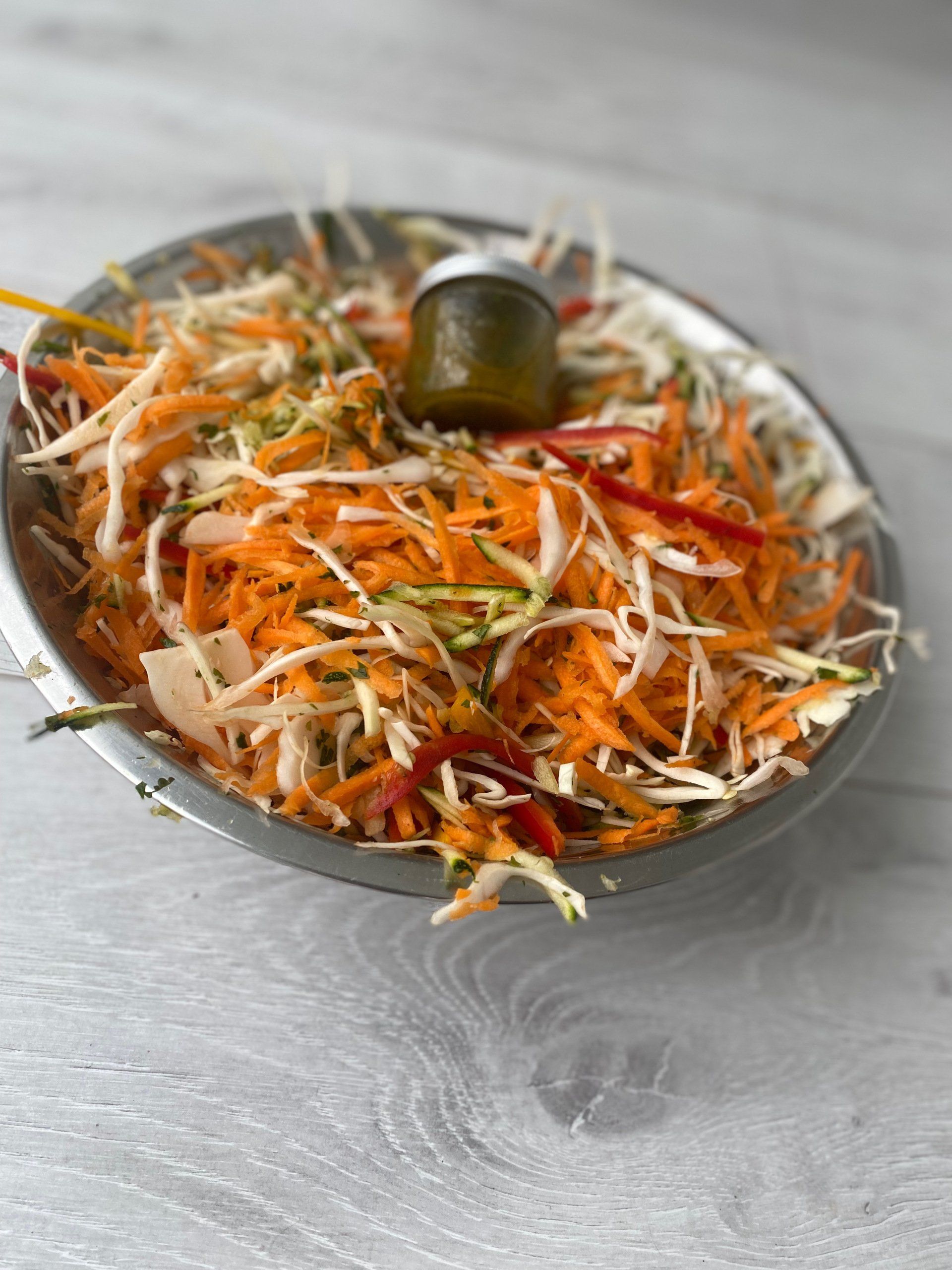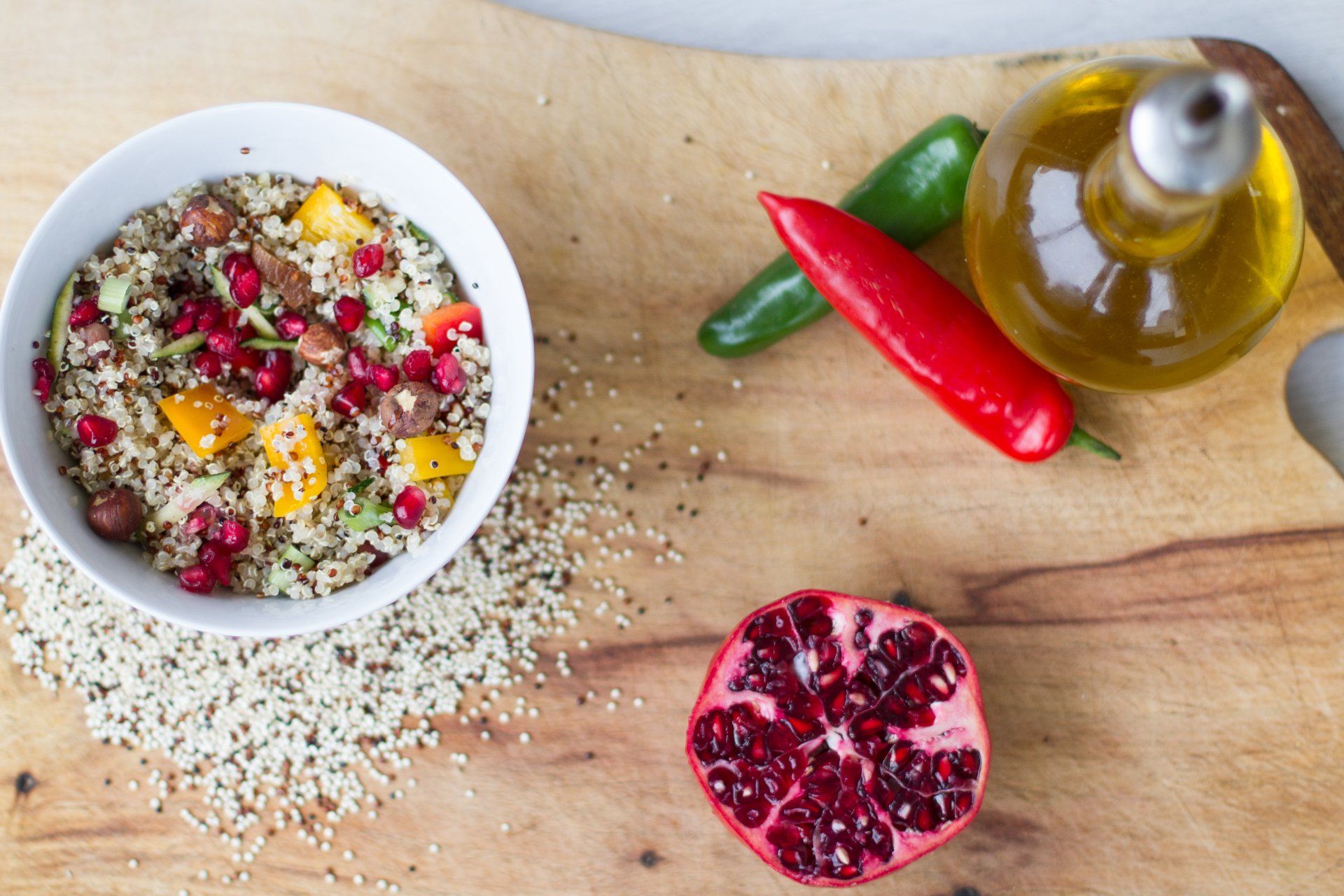Fermentation - what is it all about?
Fermentation is easy once you know how
In recent years, great discoveries have been made on the whole gut brain connection. I run lots of fermentation demos to teach people how to make fermented foods at home. I would like to take this opportunity to demystify fermentation talk about making natures probiotics at home to keep your family healthy. Here is a link to a videoof this info!
I firmly believe that my families health benefits hugely from the daily consumption of fermented foods.
While I have some background in nutrition (Home Economics degree) I am approaching this demonstration as a chef, not a nutritional expert. I will show you how to make fermented foods and drinks at home and some ideas of how you might incorporate them into your daily diet. Probiotics are not stored in your body so they need to be consumed on a regular basis.
NUTRITION
I have consulted with Ilona Madden, Nutritional coach at Right Food 4 U and we have come up with an outline of facts on gut health based on current teachings at the Irish Institution of Nutrition and Health. There are many studies out there, please read up yourself if you haven’t already done so. If you want to read about the science backing it up I suggest you check out The Psychobiotic Revolution
1)If you have plenty of good bacteria in your gut, then the bad guys can't thrive in it.
2)Plenty of gut bacteria create healthy digestion ; bad digestion is linked to many diseases, from simple indigestion to colon cancer.
3)Healthy gut bacteria play a big role in the immune system , direct connection between gut and immune functions.
4)Healthy bacteria produce vitamins B and K for the "host".
5) Heavily advertised yoghurts have only a tiny fraction of good bacteria compared to fermented foods.
6)Bacteroides (the most abundant of the bacteria) metabolise polysaccharides (sugars) into short chain fatty acids which are important for healthy gut lining , e.g. avoids leaky gut - that stuff can go through intestines into blood that shouldn't and could cause allergies.
7)Bacteria play a role in the body's own energy production which is vital for all proper cell function (energy for the cells) but also for the whole human (i.e. if plenty of energy is there for vital organs and cells to function, there is also plenty left for other activities).
8)Lactobaccilli (abundant in kefir) help convert lactose into lactic acid and create an acidic environment that can fight bacteria like salmonella.
9)By purposely altering the ecology of the intestines MANY chronic health problems can be reversed or prevented.
10)The GI tract is sterile at birth, the gut health can then be affected by
-Delivery method (vaginal birth is best)
-Hygiene methods
-Maternal microflora
-Type of feeding (breastfed is best)
11) Illness occurs when the beneficial bacteria decrease and the other organisms increase in numbers.
12)What can affect gut health?
-Low HCL (hydrochloric acid) & Pancreatic insufficiency
-High animal protein, low fibre diet
- High refined sugar diet
- Antibiotic use
-Birth control pill
-Other hormones, e.g. steroids
- Alcohol
- Stress
13)Even though there are 500 species of bacteria, 95% bacteria in our bodies are from 30-40 species .
14)There are up to 10 times more organisms than there are cells in our body.
COOKING
Sandor Katz is largely considered the father of fermentation. While the tradition has been around many years it has recently become very popular amongst the health conscious. Think of fermenting as nature’s probiotics , full of healthy lactic acid bacteria. April Danann, a clinical nutritionist from West Cork taught me the process of fermentation. Charlotte Pike has recently written a book, ‘Fermented’ that is a well laid out beginners guide to fermentation, as has Dearbhla Reynolds. Pete Evans from Australia, cultures4health and Val O’Connor are other good sources for recipes etc. The book called “gut” by Giulia Enders is a great read.
Some examples of fermented foods are Kombucha, Water Kefir, Milk Kefir and yoghurt, Live yoghurt, Sauerkraut , Kimchi, Miso, Tempeh, Sourdough bread, Ginger beer/lemonade and Apple cider vinegar which is used in my winter tonic recipe. Here is my Kimchi recipe!
GUIDELINES FOR HOME FERMENTING:
· Successful fermentation needs a warm environment , away from direct sunlight.
· Wild fermentation occurs readily from naturally occurring organisms present on the skin of many fruits and vegetables as well as in the air.
· As it is impacted by the environment, the resulting ferment takes on characteristics of your unique environment .
· As your starters grow, You will usually have excess, people usually gift their excess to friends.
· It can take a few ferments for a starter to settle in your environment .
· Use organic where possible , fermentation amplifies things so if there are pesticides there you will amplify them.
· The fermentation vessels can be cleaned with hot water and regular soap (and rinsed very well ) or vinegar, but never bleach.
· Refrigeration stalls the fermentation process; this is very useful when working with sourdough starters etc.
· If you go away for a while, you can put your scobies into a ‘ scoby hotel’ This is basically a container with some brewed kombucha and some sweet tea and as many scobies as you can fit, sealed and left at room temperature, indefinitely, with maintenance every 2-6 months. See the blog Ohwecook for more info.
· Water Kefir grains can be put on hold if you go away for a while, Simply pace them in a jar, cover with sugar water, seal and leave in the fridge for up to 3 weeks. To keep longer it is recommended they are dehydrated, for further details see www.culturesforhealth.com
· Milk Kefir grains can be kept in the fridge for up to 3 weeks by covering them in fresh milk in a sealed container in the fridge. Once you want to use them again, strain off the milk and add fresh milk. Further details can be found at www.culturesforhealth.com .
· Some feel fermented foods help them digest better, others get colds and viruses less often, some get more energy, and some people feel nothing much in particular, but enjoy the taste and value of it over store-bought yogurt, kombucha or kefir.
· Traditional fermentation of vegetables is in brine, salt and its own water. More modern fermentation methods suggest you add something to guide the ferment and set it on its way, eg whey from yoghurt, water kefir, vinegar or commercial starter culture.
· Chlorine can inhibit the growth of what we are aiming for, so best to remove it or use spring or well water.
· Sugar is necessary in the fermentation of many drinks, regular white sugar is fine as it is easily digested by the cultures, which is then broken down so the end product does not contain much sugar. Alternatives like honey and stevia do not work well.
· Introduce fermented foods slowly into your diet, start with a teaspoon and build up. If introduced too quickly it may cause diarrhoea or constipation.
FERMENTATION TERMINOLOGY
Scoby - S ymbiotic C olony O f B acteria and Y east
Water kefir grains - small pebble like organisms, white /clear colour
Milk Kefir grains - Cauliflower like white blobs
Mother – the mass of fermenting bacteria culture
Scoby hotel – Place to hold scobies when not needed
Starter – A preparation to assist the fermentation process
First and second ferment - First ferment is with the ‘mother’, second ferment is when product is removed from mother and it can add flavor, nutrition or carbonation.
EQUIPMENT
Fermentation is relatively inexpensive to do at home, there are a few pieces of equipment you will need but hopefully you have most of them at home. Recycled wide mouth jars are fantastic.
I find the best value for the jars is in Ikea but Woodies and Heatons also do a great range and often have special offers.
Always wash hands and rinse well before commencing the fermentation process. As many cultures do not like metal, it is beside to limit contact (eg, strainers, bowls etc).
Muslin – fabric shop like Hickey Home Focus
Elastic bands
Glass jars
Wooden spoons
Non-metal strainers
Funnel
Wide mouth jars
Mason/kilner jars
Stones or weights to hold down vegetables (non metal)
Masking tape – to remember what date you started a ferment!
If you haven't been to my demos and you want to purchase your starter, then check out www.kefir.ie

